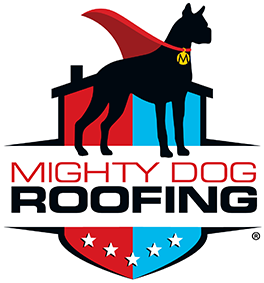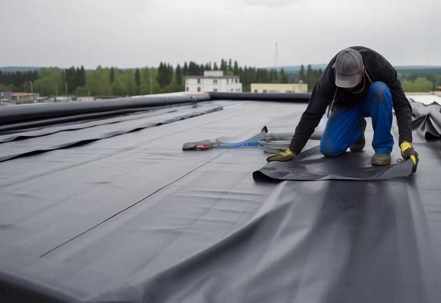What Is Ice and Water Shield? Exploring Its Roofing Role
A Shielding Solution for Your Home's Protection
As homeowners and property managers, it is important to recognize not only the outermost layers of our roofs but also the hidden barriers that help protect against nature's harshest conditions. A crucial but often underestimated component of modern roofing systems is the ice and water shield. In this article, we will explain why investing in an ice and water shield is one of the best decisions you can make for your home.
What Are Ice And Water Protectors?
An ice and water protector is a waterproof barrier installed on the roof surface, protecting the roof structure from water damage.
In the event of ice damming and heavy rainfall, without ice and water shield water could seep into the roof, reaching its structural elements and jeopardizing its stability. This is precisely why an ice and water shield is used to prevent leaks and improve the longevity of your roof.
Since the ice and water shield completely adheres to the roof surface, you can rest assured that it will remain on your roof despite strong winds and severe weather. In addition to its “peel and stick” design, the shield is also self-healing - meaning that it will create a watertight seal around roof shingles.
Can Ice Dams And Wind Driven Rain Cause Ice And Water Damage?
When ice and snow accumulate on your roof deck it will start melting at some point, and continuous melting is one of the biggest threats to your roof. The added weight on the roof can eventually lead to leaks that reach the roof base and all of its elements.
Once the snow starts to melt, either due to a change in temperature or poor attic insulation, the melted water will start flowing toward the roof edge. However, a sudden drop in temperatures can result in melted water refreezing and transforming into an ice dam.
An ice dam can create a blockage on the edge of your roof or in your gutters. This will prevent melting snow from flowing down the roof, and will direct it below the roof shingles. In addition, severe storms followed by strong winds can lift the unprotected shingles, and allow rainwater to seep into your roof, or leak into your home.
Ice damming and heavy rainfall can seriously jeopardize the stability of your roof - especially if the extra weight of the water loosens the shingles on the sides of the roof. Finally, the water can find its way into your home through the attic, resulting in damaged walls, sagging ceiling, ruined insulation, mold and mildew, as well as warped flooring.
Reasons To Protect Your Roof Deck Against Ice And Water
- Accumulated ice and water can damage the structural elements of your roof, compromising your roof's integrity and possibly resulting in costly repairs.
- Ice damming often leads to water damage, as the water trapped underneath the roof shingles eventually seeps through the attic, damaging walls, ceilings, and floors.
- Heavy rainfall and strong winds often lift the shingles, allowing the rainwater to leak into the house and damage the interior.
- Ice and water shield acts as a waterproof membrane, preventing the excess water from seeping into the roof structure.
- Since this moisture barrier fully adheres to the roof deck, it does not move even during storm season and extreme weather.
- Ice and water protectors also direct the excess water from the roof into the gutter, acting as leak protection.
Types Of Ice And Water Shield
1. High heat ice and water shield: As the name itself implies, a high heat protector usually has high temperature resistance and UV stability. It is mostly installed on metal roofs, and it consists of cotton-like fibers that prevent the protector from sticking to the hot metal in high temperatures and getting damaged. It is also a convenient choice for cedar shake and slate roof systems.
2. Smooth surface ice and water shield: A smooth surface ice and water shield is an ideal solution for lower sloped roofs.
3. Granular or sand ice and water shield: The thinnest out of all three, a granular or sand ice and water shield is usually selected for roof valleys.
Ice And Water Shield Installation
- When it comes to installing ice and water protection, the local building codes in certain jurisdictions can be quite specific, which is something our roofing professionals are experts on.
- Mighty Dog roofing professionals install ice and water protection over the entire roof surface, ensuring that the water doesn’t slip underneath the protector and damage your home.
- The ice and water shield we use is made of polyethylene and rubberized asphalt, and we also install metal flashings on the valleys of the roof which protect the vulnerable meeting point of the two roof slopes.
- Installing an ice and water protector is generally recommended for all areas with cold climates that get heavy snowfall and strong wind-driven rain.
- It is particularly important for low slope roofs to have this kind of protection, as their sloped design makes them more susceptible to damage caused by large snow drifts.
- With Mighty Dog Roofing, you don’t have to worry about any damage to the landscaping around your house as we’re installing your ice and water shield.
- Our Mighty Catchall system is a durable plastic liner protecting the entire work area radius. After installing the shield, we will inspect your property with a magnetic tool making sure that no nails or other sharp objects are left behind.
3 Frequently Asked Questions About Ice And Water Protection
1. What Is The Difference Between Ice And Water Shields And Underlayment?
While an roof underlayment is secured with staples, ice and water shield is blended with bitumen which acts as a binding agent. Ice and water shield also creates a moisture-tight barrier that doesn’t allow the water to leak through any crevices.
2. How Long Does Ice And Water Shield Last?
A quality, properly installed ice and water shield protector will keep your roof protected for years to come. With our Mighty Watchdog Maintenance Program, you can have your roof thoroughly inspected annually to avoid any potential damage and ensure your roof is ready for any weather event.
3. Should Ice And Water Protectors Cover The Entire Roof Deck?
While some people choose only to protect the most vulnerable areas of their roof, we advise our clients on choosing an ice and water shield that covers the roof in its entirety for maximum protection. Our certified roofing experts can conduct a free inspection of your roof and come up with a solution that meets your needs and budget.
Conclusion
An ice and water protection system on your roof can give you much-needed peace of mind, especially during storm season and snowy winter months. Our roofing experts conduct a thorough inspection of your home, finding the best solution to keep your roof secure and your home dry. Contact Mighty Dog Roofing at (833) MIGHTY 4 to schedule your free consultation!


